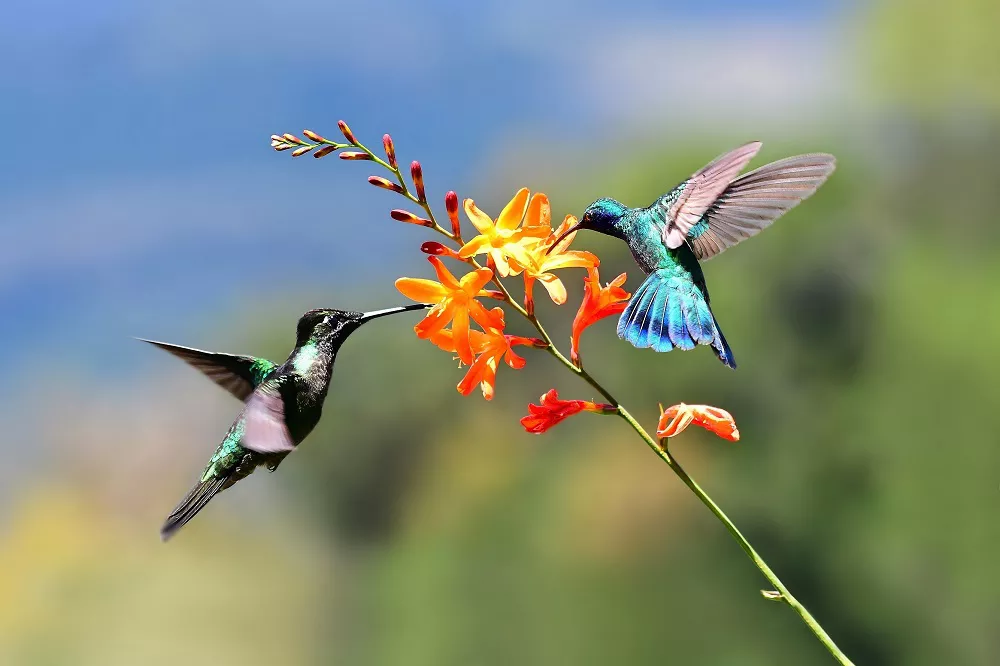Birds come in all shapes and sizes, from the enormous ostrich to the majestic eagle. But not all birds are large and imposing – some are so small that you might struggle to see them without a pair of binoculars. In fact, the smallest birds in the world are so tiny that they could fit easily in the palm of your hand.
In this article, we take a closer look at the smallest bird species on the planet, exploring their unique features, habitats, and behaviors.
Hummingbirds: The kings of smallness
When it comes to small birds, hummingbirds are among the most famous. These tiny creatures are known for their colorful plumage and their ability to hover in mid-air, thanks to the incredibly fast flapping of their wings. But just how small are hummingbirds?
The answer depends on the species. The bee hummingbird, which is found only in Cuba, is the smallest bird species in the world. These diminutive birds weigh in at just 2.6 grams – less than a teaspoon of sugar! – and measure only 5-6 cm in length. That means they are smaller than many insects, including some butterflies.
Despite their size, bee hummingbirds are remarkable creatures. They have iridescent feathers that shine in the light, and their long, thin beaks are perfectly adapted for sipping nectar from flowers. Bee hummingbirds build nests that are barely larger than golf balls, and they lay eggs that are about the size of a coffee bean.
Other tiny bird species
While hummingbirds are undoubtedly the kings of smallness, there are other bird species that come close in size. Here are a few examples:
- Pygmy Tit
The pygmy tit, which is found in Asia, measures just 6 cm in length and weighs around 5 grams. These birds are known for their distinctive crested heads and their love of insects.
- Elf Owl
The elf owl, which is found in the southwestern United States and Mexico, measures around 13 cm in length and weighs just 40 grams. These tiny owls are nocturnal and feed on insects and small rodents.
- Goldcrest
The goldcrest, which is found in Europe and Asia, measures around 9 cm in length and weighs just 5-7 grams. These birds have distinctive yellow crests on their heads and feed on insects and spiders.
How do tiny birds survive?
Surviving as a tiny bird isn’t easy. Small birds face a range of challenges that larger species don’t have to worry about. For example, they are more vulnerable to predators, including cats, snakes, and birds of prey. They also have a harder time regulating their body temperature, which means they need to eat frequently to maintain their energy levels.
To overcome these challenges, tiny birds have evolved a range of adaptations. One of the most important is their high metabolism – tiny birds have to eat constantly to stay alive, and they can consume up to half their body weight in food every day. They also have fast heartbeats and breathing rates, which help to keep their bodies warm and oxygenated.
In addition, many tiny bird species have developed unique behaviors to help them survive. For example, some species migrate long distances to find food and breeding grounds, while others form flocks for protection against predators.
Protecting tiny birds
Despite their small size, tiny birds play an important role in ecosystems around the world. They help to pollinate flowers, control insect populations, and provide food for larger predators.
Unfortunately, many tiny bird species are threatened by habitat loss, pollution, and climate change. As their habitats disappear, these birds are forced to compete for resources with other species, and they may struggle to find suitable breeding grounds.
To protect tiny birds, conservationists are working to preserve their habitats and raise awareness of the importance of these small but vital creatures. By supporting conservation efforts, we can help to ensure that tiny birds continue to thrive for generations to come.
Conclusion
The world of tiny birds is a fascinating one, filled with unique species and incredible adaptations. From the bee hummingbird to the pygmy tit, each of these birds has its own story to tell. By learning more about these tiny creatures and supporting efforts to protect them, we can help to ensure that they continue to thrive in the years to come.
Related topics:
- World’s Smallest Hummingbird——The Bee Hummingbird
- Is the wren the smallest british bird?
- What is the smallest falcons in the world?
- What is the smallest bird of prey?


 Facebook
Facebook  Instagram
Instagram  Youtube
Youtube 